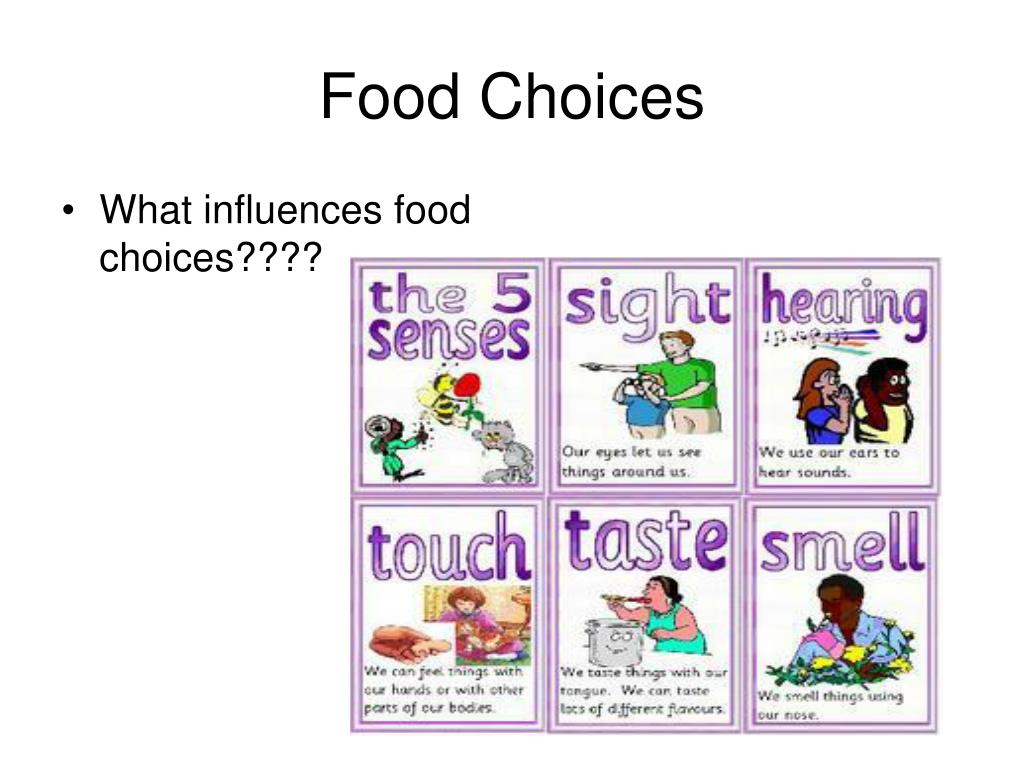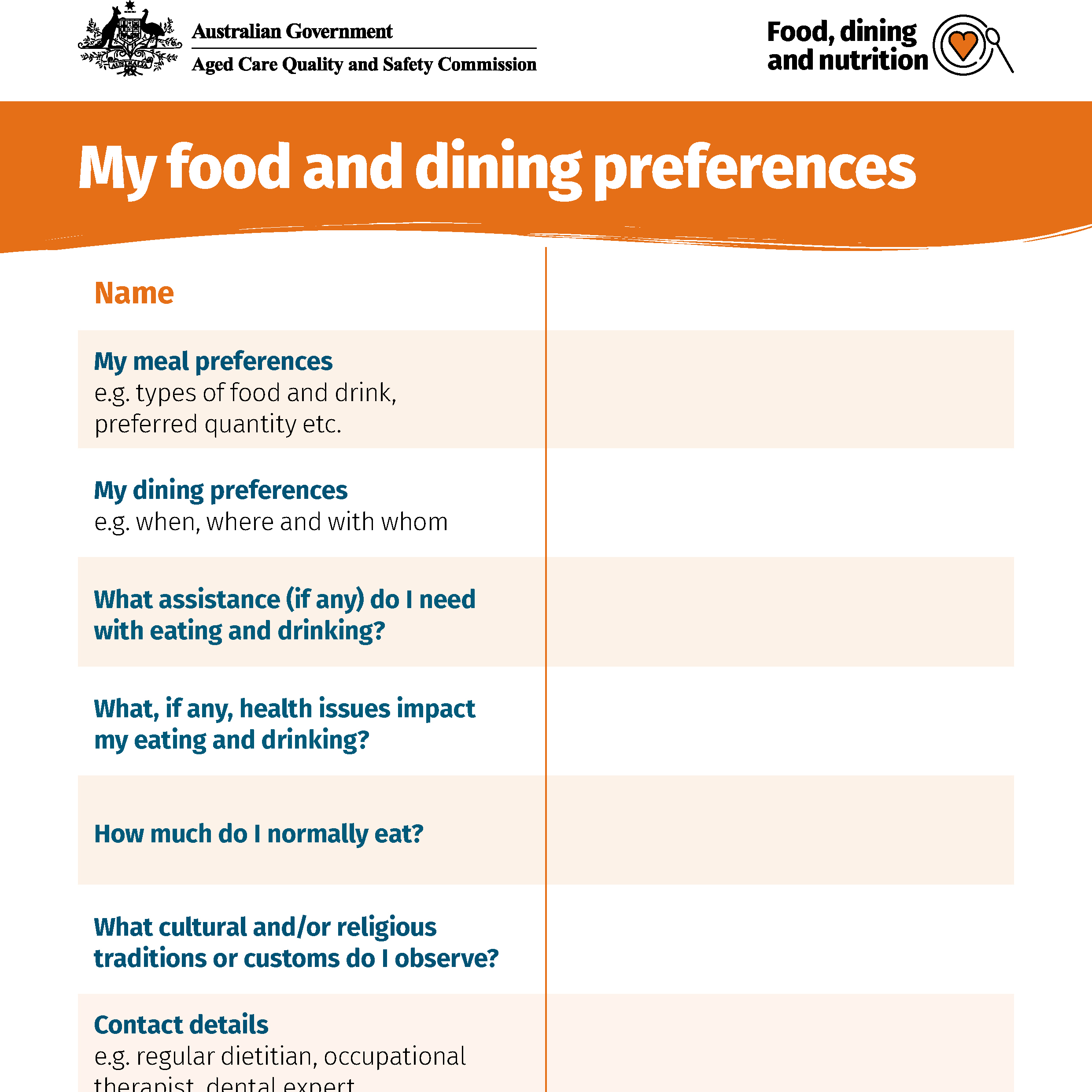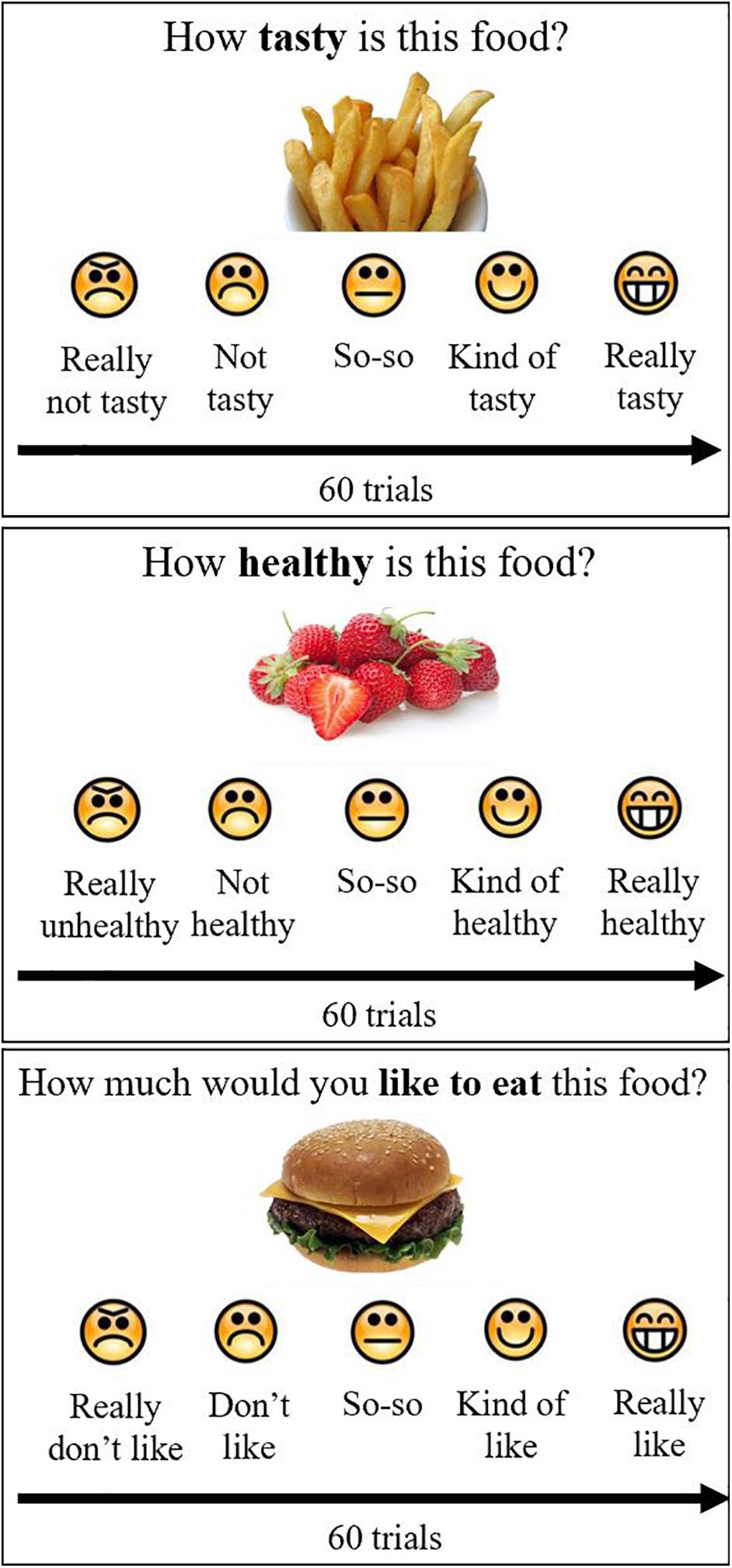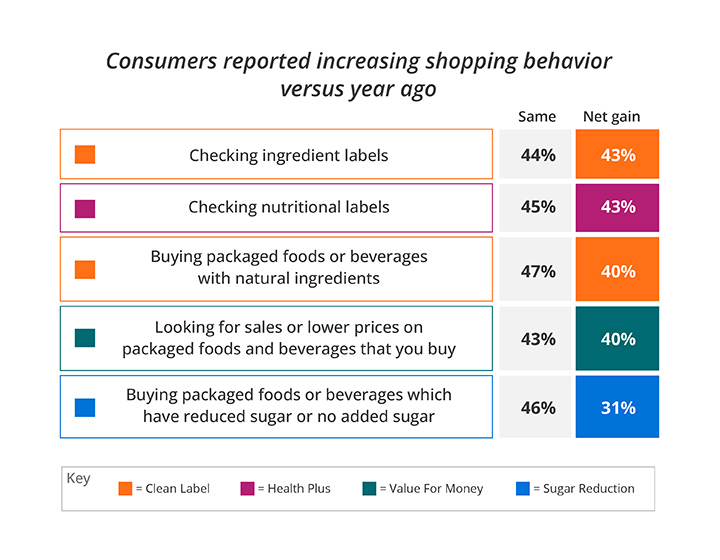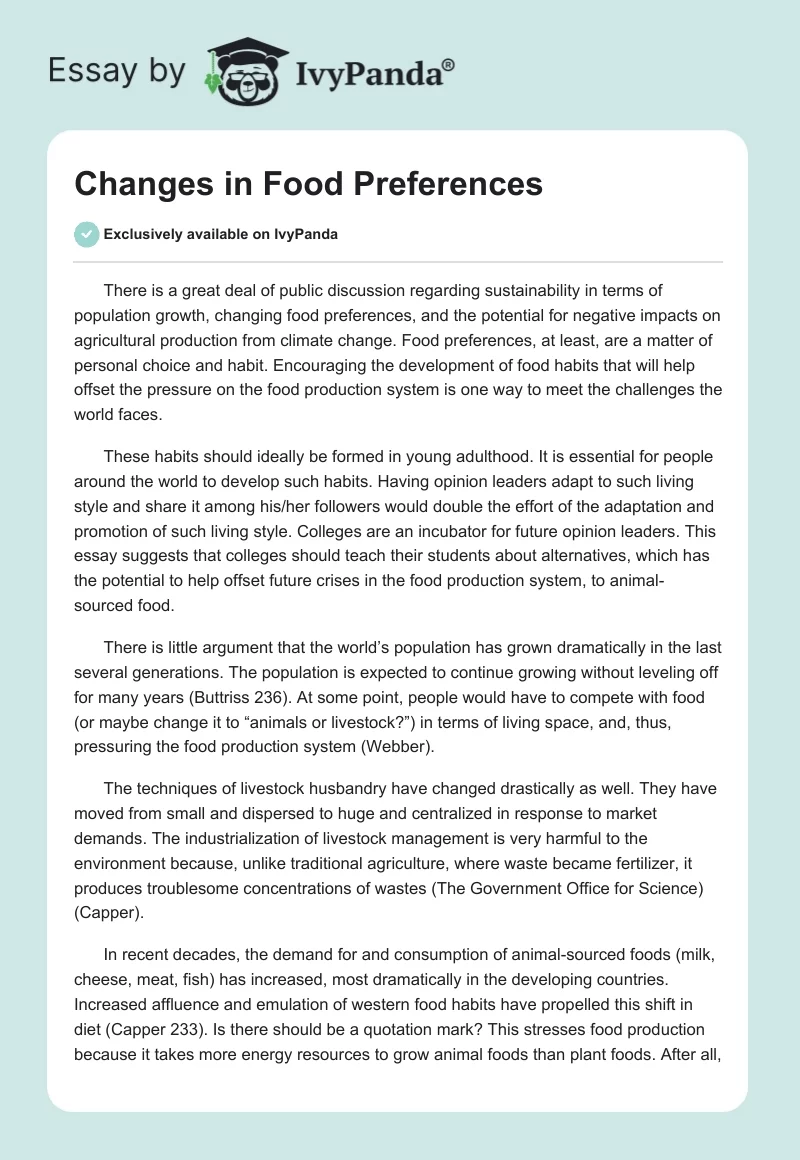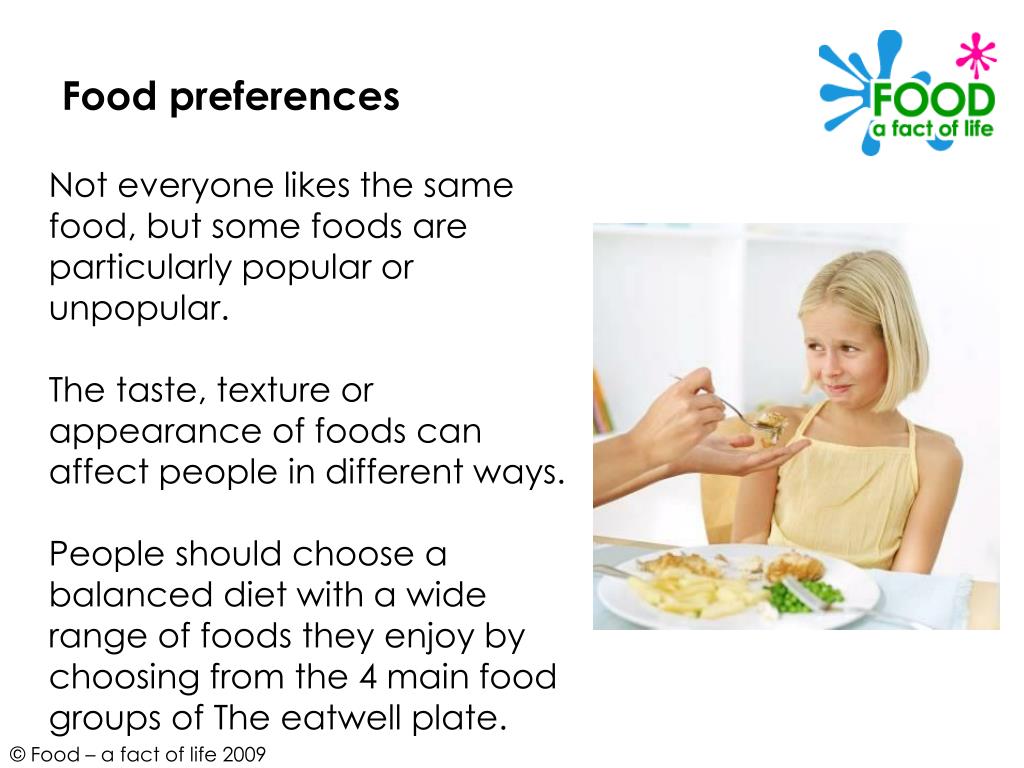Which Of The Following Is True About Food Preferences

Imagine a bustling farmer's market on a crisp autumn morning. The air is filled with the aroma of freshly baked bread, ripe apples, and spicy chai. Children giggle as they reach for colorful fruits, while adults carefully examine the vibrant produce, each drawn to different textures, scents, and tastes. This vibrant scene is a microcosm of the complex world of food preferences, a landscape as diverse as the people who inhabit it.
At the heart of our relationship with food lies a fundamental question: What shapes our individual tastes and cravings? Understanding the origins and evolution of our food preferences is crucial, not only for personal health and well-being but also for addressing broader issues like food production, nutrition education, and public health policies. It's a field where nature and nurture intertwine, creating a uniquely personal culinary fingerprint for each of us.
The Nature vs. Nurture Debate: A Deliciously Complex Equation
The age-old debate of nature versus nurture plays a significant role in shaping our food preferences. Are we born with an innate liking for certain tastes, or are our palates molded by our environment and experiences?
Research suggests that we do, in fact, have some predispositions. Infants, for example, exhibit a natural preference for sweet tastes, a trait thought to be evolutionarily advantageous as it guided them towards energy-rich foods like breast milk. Conversely, they often display aversion to bitter tastes, potentially a protective mechanism against toxins that are commonly found in poisonous plants.
However, the influence of genetics only tells part of the story. From the moment we are born, our environment begins to shape our culinary journey. The foods our mothers consume during pregnancy and breastfeeding can influence our early taste preferences. Studies have shown that babies whose mothers drank carrot juice during pregnancy were more likely to enjoy carrot-flavored foods later in life.
The Power of Early Experiences: Molding Our Palates
Our early childhood experiences are particularly powerful in shaping our long-term food preferences. Repeated exposure to certain foods during this critical period can lead to increased acceptance and liking.
Conversely, negative experiences, such as being forced to eat a disliked food, can create lasting aversions. Think of the child who was forced to finish a plate of overcooked broccoli, only to develop a lifelong dislike for the vegetable.
Cultural factors also play a significant role. The foods we grow up eating in our families and communities become deeply ingrained in our sense of identity and comfort. Cultural traditions, religious practices, and regional cuisines all contribute to the diverse tapestry of food preferences around the world.
The Influence of Social and Psychological Factors
Beyond genetics and early experiences, our food preferences are also influenced by a complex interplay of social and psychological factors. Social learning, for example, plays a crucial role.
We often mimic the eating habits of those around us, particularly our family members, friends, and role models. Children are more likely to try new foods if they see their parents or older siblings enjoying them.
Psychological factors, such as emotions, stress, and mood, can also significantly impact our food choices. Many people turn to comfort foods during times of stress or sadness, seeking solace in familiar and often calorie-dense treats.
The Ever-Evolving Palate: Food Preferences Throughout Life
Our food preferences are not static; they evolve throughout our lives. As we age, our taste buds become less sensitive, and our sense of smell diminishes, which can affect our ability to perceive flavors. This can lead to a preference for more intensely flavored foods.
Health concerns and dietary restrictions can also influence our food choices. Individuals with diabetes, for example, may need to limit their intake of sugary foods, while those with allergies may need to avoid certain ingredients altogether.
Furthermore, increased awareness of nutrition and health can lead to a shift in food preferences. Many people are now consciously choosing healthier options, such as fruits, vegetables, and whole grains, due to their understanding of the benefits of a balanced diet.
Debunking Common Myths About Food Preferences
There are many misconceptions surrounding food preferences. One common myth is that picky eaters are simply being difficult or stubborn. In reality, picky eating can be a complex issue with a variety of underlying causes, including sensory sensitivities, anxiety, and learned behaviors.
Another myth is that food preferences are fixed and unchangeable. While some preferences may be deeply ingrained, it is possible to expand your palate and learn to enjoy new foods. Gradual exposure, creative preparation methods, and positive associations can all help to overcome food aversions and broaden your culinary horizons. Studies by *Dr. Lucy Cooke* at *University College London* have shown the success of repeated exposure to new foods, particularly in children.
It’s also a misconception that expensive food is inherently better. Cost doesn't always equate to flavor or satisfaction. Simplicity and fresh ingredients can often create the most memorable culinary experiences. A perfectly ripe tomato from your garden can be far more satisfying than a fancy dish at an expensive restaurant.
The Significance of Understanding Food Preferences
Understanding the complexities of food preferences has far-reaching implications. From a personal perspective, it can help us to make healthier and more informed food choices. By understanding our own triggers and cravings, we can develop strategies to manage our eating habits and maintain a healthy weight.
At a societal level, understanding food preferences is crucial for addressing issues like childhood obesity, malnutrition, and food waste. Developing effective nutrition education programs requires an understanding of the factors that influence food choices in different populations. *The World Health Organization (WHO)* emphasizes the importance of culturally sensitive nutrition interventions.
Furthermore, the food industry can benefit from a deeper understanding of consumer preferences. By tailoring products and marketing strategies to meet the needs and desires of diverse populations, companies can create more appealing and sustainable food systems.
A World of Flavor: Embracing Culinary Diversity
In conclusion, food preferences are a fascinating blend of nature and nurture, shaped by genetics, early experiences, social influences, and psychological factors. They are not fixed or immutable, but rather evolve throughout our lives.
Embracing the diversity of food preferences can lead to a richer and more fulfilling culinary experience. Instead of judging or dismissing others' food choices, we can celebrate the unique tastes and traditions that make each of us who we are.
As we navigate the world of flavor, let us remember that food is more than just sustenance; it is a source of pleasure, connection, and cultural identity. By understanding and appreciating the complexities of food preferences, we can create a more inclusive and delicious world for all.


